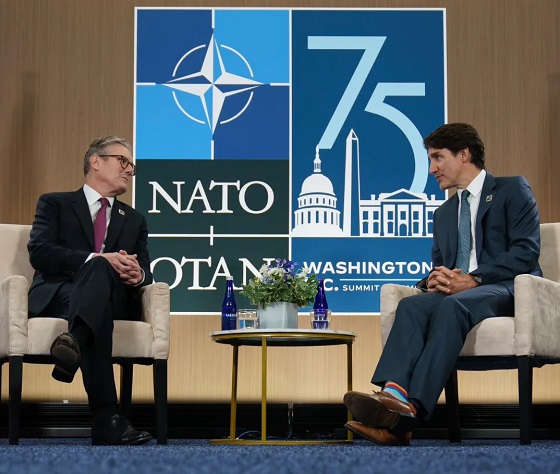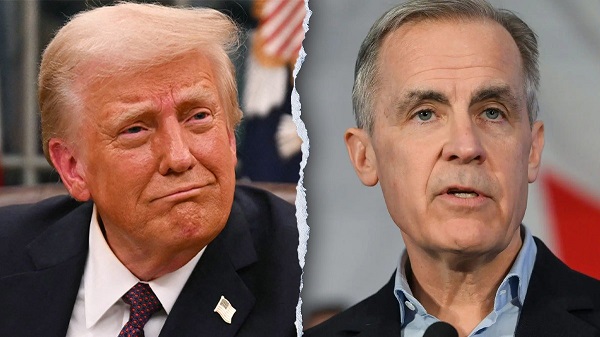MacDonald Laurier Institute
It’s time for a grown-up conversation on immigration

From the MacDonald Laurier Institute
Rapid population growth makes Canada’s most pressing challenges harder to manage.
Canada has been shaped by large-scale immigration. With the exception of Indigenous Peoples, the vast majority of Canadians today are either immigrants or descendants thereof. Our nation has thrived as a pluralistic and multiethnic society, built through the gradual integration of people from around the world.
While this is largely a good news story it should not obscure a hard truth: in the 21st century, the challenges associated with immigration are vastly different from those of 50 or 100 years ago, and until recently policymakers have been unwilling to discuss immigration policy accordingly. These challenges can be broadly categorized into three areas: economic impact; infrastructure capacity; and cultural friction.
When it comes to economic impact, immigration has historically, on balance, been beneficial to Canada’s economy and standard of living. But in recent years the evidence has become more mixed. In particular, the sheer number of new arrivals—over one million in 2022 alone—especially in the form of temporary and lower-skilled migrants, is increasingly being used as a substitute for Canadian labour, driving down wages. This downward pressure, while good news for employers trying to contain costs, has the dual effect of dragging down per-capita GDP, while disincentivizing business investment in labour-productivity-enhancing innovations.
The cause of the jump in total migrants per year is also no secret: there has been an explosion in the number of international postsecondary students studying in Canada over the last decade—jumping from 248,000 in 2012 to 807,000 in 2022—largely as a result of postsecondary institutions seeking a more lucrative income stream since they are able to charge international students much higher fees. With no annual cap on foreign student visas, this has effectively become a massive back-door entry loophole to get into the country. Many of these students arrive with the hope of becoming permanent residents, which also entitles them to sponsor family members to come to Canada, further boosting migration levels.
Equally concerning has been the effect of this population growth on housing prices, which is a straightforward arithmetic function of supply and demand. Canada has some of the most expensive housing in the world, overwhelmingly a result of insufficient housing supply, especially in major cities. High levels of immigration, also concentrated in these cities, exacerbate the problem from the demand side. Both Canadians and newcomers suffer if they cannot afford a place to live. Similarly, many Canadians are unable to find a family doctor and face crowded schools, transit, hospitals, or other crumbling infrastructure. Rapid population growth makes these challenges harder to manage.
But, while concerns about immigration’s impact on our economy and infrastructure have slowly begun to attract more attention and public discussion, the issue of cultural friction remains largely taboo.
It should be said that historically, Canada has been fairly successful at integrating people from diverse religious, linguistic, and racial backgrounds, and even today there is a strong case that Canada manages these challenges better than most other countries. What was once a fairly organic process that allowed for integration over years, if not generations, has been supplanted by activist government policy that preaches an official doctrine of big-M Multiculturalism, which fetishizes and subsidizes cultural differences while simultaneously erasing and downplaying Canadian history. In effect, the implicit social contract between Canada and newcomers has become unbalanced. Canada is and should remain a place where newcomers are free to retain their religion, language, and culture. But we must also actively invite all Canadians, new and old, to join a shared national project to ensure we are working towards living together rather than simply side by side.
In addition to counterproductive government policies, few have noted that the integration process has been dramatically changed by technological advance which now allows for immigrants to retain permanent, real-time cultural ties to their native countries. This phenomenon—where people can be physically present in one place but maintain daily cultural and social ties to their homeland—presents a special challenge to a country with a relatively weak national identity. This is particularly true of Canada’s large diaspora communities, including those from China, India, and Iran, which have increasingly impacted Canada’s international relationships and given rise to interference (alleged or proven) by these countries on Canadian soil.
Canada has historically enjoyed strong support for immigration across the political spectrum, a consensus that is not common in other countries. Recent opinion polling suggests that this consensus is rapidly eroding, if not already gone. We are long overdue for an honest, constructive, and robust debate about the way forward on immigration. We owe it to Canadians—both present and future.
Aaron Wudrick is the domestic policy director at the Macdonald-Laurier Institute.
armed forces
Underfunded and undermanned, Canada’s Reserves are facing a crisis
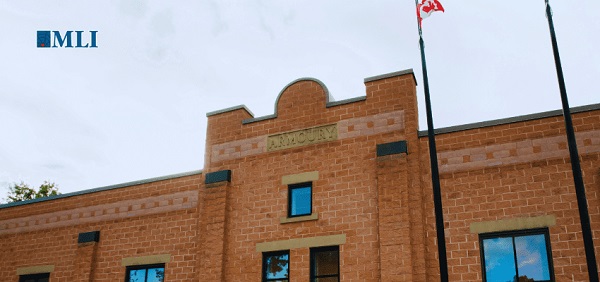
The Macdonald Laurier Institute
By J.L. Granatstein for Inside Policy
With the new threats facing Canada and NATO, change must come quickly: Canada needs to fix the Army Reserves.
Canada’s once-proud Reserves force is fading fast – and without urgent action, it risks becoming irrelevant.
The Canadian Armed Forces Primary Reserves have an authorized strength of 30,000, but the present numbers of the Army, Navy and Air Force Reserves as of November 2024 are only 22,024. The RCN Reserves number 3,045, the RCAF 2,162, and the Army 16,817. This is frankly pathetic, all the more so as the regular forces are sadly understrength as well.
The Army Reserves have a long history, with some units dating back before Confederation. Before both world wars the Militia’s strength was roughly 50,000, generated by populations of eight million in 1914 and eleven million in 1939. Amazingly, despite a lack of training and equipment, the Militia provided many of the Army’s officers, up to and including successful division and regimental commanders, and large numbers of the senior non-commissioned officers. A century ago, even after some consolidation following the Great War, almost every town and city had an armoury and a Militia unit with a cadre of officers, good numbers of enlisted men, and some social status in their community. The factory owners, bankers, and well-off were heavily represented, and the Militia had real clout with representation in Parliament and easy access to the defence minister.
Not any longer. The armouries in most of Canada have disappeared, sold off by governments and levelled by developers, and those that still stand are in serious need of maintenance. The local elites – except for honorary colonels who donate funds for extra kit, travel, celebratory volumes, and to try to stop Ottawa from killing their regiment – are noticeably absent.
So too are the working men and women and students. As a result, there are Army Reserve units commanded by a lieutenant-colonel with three majors, half a dozen captains, ten lieutenants, a regimental sergeant major and any number of warrant officers, and under seventy in the ranks. It is a rare Reserve regiment, even those in Canada’s largest cities, which has a strength above 200, and ordinarily when a unit trains on a weeknight or a weekend only half that number turn up. Even in summer, when reservists do their serious training at Petawawa or other large bases, there will be many absentees.
And when a unit is asked to raise soldiers for an overseas posting – say for the Canadian-led brigade in Latvia – it might be able to find ten or so volunteers, but it will be highly unlikely to be able to do so when the next call comes. Reservists have families, jobs or school classes, and few are able and willing to go overseas and even fewer to do so for subsequent deployments.
Without reservists filling the ranks (and even with them providing up to 20 per cent of a battalion’s strength), the undermanned regulars must cobble together a battalion of 600 or so by seconding troops from another Regular unit. After being brought up to Regular force standards before deployment, the reservists have performed well in operations, for example, in Afghanistan.
So why can’t the Army Reserves find the men and women to join their ranks? The reasons are many and much the same as the recruitment difficulties facing the Regular Army. Sexual harassment cases have abounded, affecting the highest ranks and the lowest. Modern equipment has been and is continuing to be lacking.
Procurement is still bogged down with process, paperwork, and long timelines – for instance, approving a new pistol took a decade. And the Reserves get modern equipment only after the Regulars’ needs are met, which unfortunately means never. Instead of a tank or a Light Armoured Vehicle, units get pickup vehicles painted in dark green and see anything more only on their rare days of training in the field.
Leaders of the Reserves have called for a separate budget for years, demanding that they decide how the funds are allocated. National Defence Headquarters has refused, rightly claiming that the underfunded Regulars have higher priority. But the Reserves point to official documents that in 2019-20 demonstrated that of $3.018 million allocated to the Reserves, only $1.3 billion reached them, the rest being unspent or re-allocated to the Regulars.
With some reason this infuriates Reservists who point to this happening every fiscal year.
So too does what they see as the condescension with which they are treated. A Reserve major is equal in rank to a Regular major, but both know that the Regular is almost always far better trained and experienced for his job and that rankles. (Many years ago, when I was a junior officer, I remember another Regular referring to “the ****ing Militia.” I know that Reserve officers reverse the compliment.)

Today with unemployment above nine per cent and with young Canadians’ unemployment rate even higher, the Reserves pay a new private a daily rate of some $125 (The Carney government recently promised a substantial pay raise). This ought to be a good option to earn some money. The Toronto Scottish, an old and established infantry unit, for example, has a website that lists other benefits: up to $8,000 for educational expenses and up to $16,000 for full-time summer employment. The Toronto Scottish has two armouries in the western suburbs, a female Commanding Officer, but under 200 soldiers. There should be a real opportunity in the current circumstances to increase those numbers by a good advertising campaign pitched directly at young men and women in the Toronto suburbs. The same can be said for every big city.
But the small town and rural units, tiny regiments whatever their storied histories, are unlikely to be able to grow very much. National Defence Headquarters needs to set a number – say 150, 200, or 250 – above which a unit will keep its command structure. Below that standard, however, units will be stripped of their higher ranks and effectively consolidated under the Reserve brigade in their area.
Reservists have fought such suggestions for years, but if the Reserves are to become an efficient and effective force, this is a change that must come. One such experiment has combined the Princess of Wales Own Regiment in Kingston, Ontario, and the Brockville Rifles by putting the Commanding Officer of the first and the Regimental Sergeant Major of the second in charge. Unit badges can remain, but this reduces the inflated command staffs.
In reality, these small regiments are nothing more than company-sized sub-units, and sub-units of less than a hundred simply cannot train effectively or draw enough new members from their small town and rural catchment areas. Combined they can function effectively.
The federal government will soon release an army modernization plan. Change is always difficult but with the new threats facing Canada and NATO, change must come quickly. Canada needs to fix the Army Reserves.
Historian J.L. Granatstein is a member of the Macdonald-Laurier Institute’s Research Advisory Board. A bestselling author, Granatstein was the director and CEO of the Canadian War Museum. In 1995, he served on the Special Commission on the Restructuring of the Reserves.
Housing
Government, not greed, is behind Canada’s housing problem

By Anthony De Luca-Baratta for Inside Policy
When it comes to housing unaffordability in Canada, Prime Minister Mark Carney has correctly diagnosed the problem – but prescribed the wrong solution. The cost of new homes across the country increasingly exceeds the average family’s budget. But Carney’s proposal to establish a new federal entity, Build Canada Homes, to “get the government back in the business of homebuilding,” will make matters worse.
During the recent election campaign, the Liberal leader promised to make the federal government into an affordable housing developer by, among other proposals, offering low-cost financing to affordable-housing builders. This approach falsely implies that housing is what economists call a public good – something governments provide because the market cannot.
National defence is a perfect example of a public good: private contractors alone would be unable to withhold protection from those who failed to pay for their services, incentivizing many to welcome the security without paying a dime. In economics jargon, this is known as the “free-rider problem.” Defence contractors would quickly go bankrupt, and the nation would be left defenceless. For this reason, the government is the primary provider of national defence in all functioning states.
If housing suffered from the same market failure as national defence, the government’s approach would have some merit. But it does not, indicating that housing is not, in fact, a public good. The laws of supply and demand are thus the most efficient way of determining both the quantity and price of housing.
In a free housing market, when prices begin to rise, builders build more units to earn higher profits. Over time, competition among builders, homeowners, and landlords forces prices back down because individuals who overcharge lose customers to those who do not. Because overcharging is bad for business, the market provides an abundance of housing at prices negotiated among millions of buyers and sellers. The result is a natural supply of affordable housing – no special incentives needed.
Some in Canada might dismiss this logic as hopelessly naïve. According to these individuals, inflated prices come primarily from landlords and developers squeezing Canadians for more profit and greed is running rampant in the Canadian housing market.
The truth is that developers and landlords are responding rationally to bad economic policy, and homebuyers and renters are footing the bill. Municipalities across Canada limit building heights, set aesthetic standards, ban certain types of construction in designated areas, impose parking requirements, and legislate minimum lot sizes, among a host of other land-use regulations.
These rules make housing harder and more costly to build, constraining supply and radically inflating prices. The C.D. Howe Institute estimates that these regulations cost homebuyers an average of $230,000 in Vancouver, Abbotsford, Victoria, Kelowna, Calgary, Toronto, and Ottawa-Gatineau. In Vancouver, that figure is an eye-watering $1 million.
It is this economic reality, not an unwillingness to build affordable housing, that lies at the root of Canada’s housing crisis.
Housing Minister Gregor Robertson inadvertently admitted as much when he cautioned that there would be no quick solution to Canada’s housing crisis because “projects take years to approve and build.” The minister failed to acknowledge that these delays are due to cumbersome municipal regulations.
To solve Canada’s housing crisis, Carney must begin by recognizing that affordable housing in Canada is in short supply because local governments have made it impossible to build. The housing market could provide affordable housing on its own – no taxpayer-funded subsidies required – if only the government would reduce burdensome industry regulations. Just look at jurisdictions with virtually no land-use regulations, like Houston, Texas, where housing is abundant and affordable. Studies have consistently shown that wherever land-use regulations are low, so are home prices.
To be fair, the Liberal Party’s election platform did acknowledge the need to cut federal housing regulations. It also suggested that it wanted local governments to streamline development, though it was short on specifics. But since the election, there is no sign that the government is moving forward with any of these proposals.
The prime minister needs to tell local governments that their federal funds will dry up if they don’t start getting out of the way of housing development. He should also offer bonuses to cities that are especially quick to build new units. Canadians need shovels in the ground now. It is time for the prime minister to use the bully pulpit to put them there.
Anthony De Luca-Baratta is a contributor to the Center for North American Prosperity and Security, a project of the Macdonald-Laurier Institute, and a Young Voices Contributor based in Montreal. He holds a master’s degree in international relations from the Johns Hopkins School of Advanced International Studies in Washington, DC.
-

 Business2 days ago
Business2 days agoThe Grocery Greed Myth
-
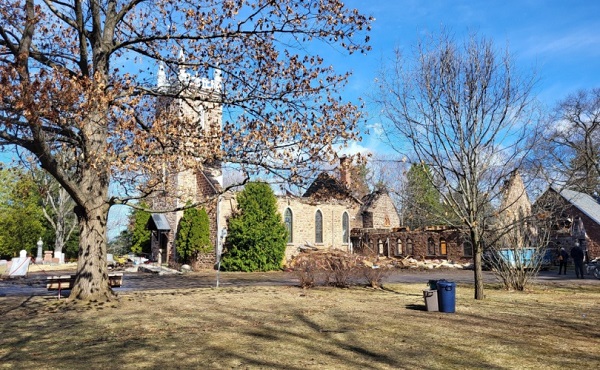
 Crime2 days ago
Crime2 days agoCanada’s safety minister says he has not met with any members of damaged or destroyed churches
-
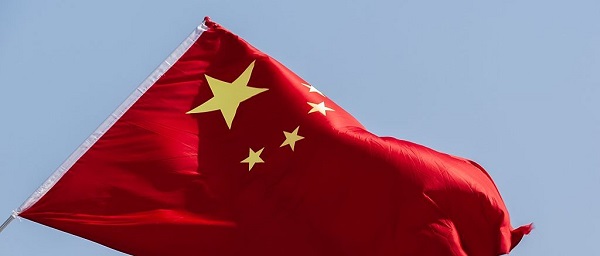
 Business2 days ago
Business2 days agoTrump Warns Beijing Of ‘Countermeasures’ As China Tightens Grip On Critical Resources
-

 Frontier Centre for Public Policy12 hours ago
Frontier Centre for Public Policy12 hours agoCanada’s Democracy Is Running On Fumes
-

 COVID-192 days ago
COVID-192 days agoTamara Lich says she has no ‘remorse,’ no reason to apologize for leading Freedom Convoy
-

 International2 days ago
International2 days agoTrump gets an honourable mention: Nobel winner dedicates peace prize to Trump
-
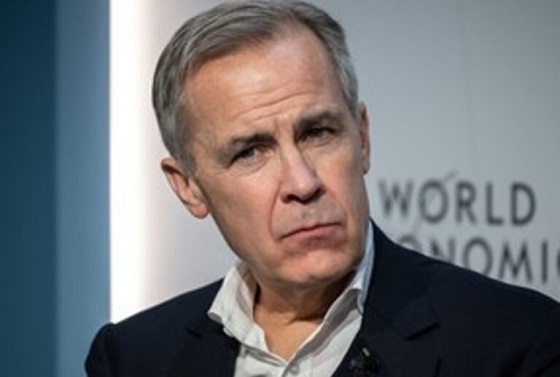
 Business2 days ago
Business2 days agoCarney government plans to muddy the fiscal waters in upcoming budget
-

 Business2 days ago
Business2 days agoTax filing announcement shows consultation was a sham





